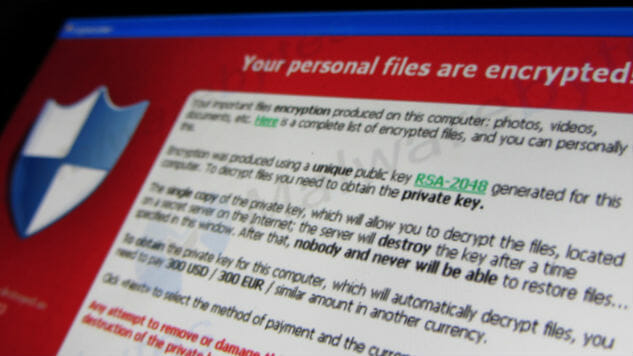Everything You Need to Know About Ransomware and Macs
Image courtesy of Flickr user Christiaan Colen
You’ve likely heard of ransomware. It’s been around for a while now but has taken a whole new degree of danger this year.
The form of malware infects your system, encrypts all your data and, as the name would suggest, holds it to ransom in exchange for a payment, sometimes a couple of hundred dollars’ worth of bitcoin.
For a long time this typically only affected Windows users but this week, cybersecurity firm Palo Alto Networks discovered the first known strain of OS X ransomware for Macs. The “KeRanger” malware was downloaded through an infected copy of BitTorrent file sharing software Transmission. It was allegedly downloaded more than 6,000 times before Apple and Transmission were able to patch things up.
This 6,000 figure is relatively small for ransomware infections in the grand scheme of things compared to Windows and Android. Nevertheless, the advent of a Mac version of ransomware shows that this threat isn’t going away any time soon. As Vann Abernethy, CTO of DDoS protection firm told Help Net Security, Mac users will now have to become as wary of threats as Windows users have been for the last number of years.
The most high profile ransomware case recently was at the Hollywood Presbyterian Medical Center hospital in Los Angeles. Likely thanks to an innocuous phishing email attachment, the ransomware was introduced to its network, encrypting valuable medical data for which there were no efficient backups and some patients even had to be moved to other facilities. Ultimately the hospital paid the $17,000 in bitcoin ransom that was being held over their heads.
Similarly a schools district in South Carolina had no choice but to dig deep into its pockets and hand over $8,500 to get its files back. And in one of the more extreme examples, a county council in the UK was hit with a ransom for £1 million.
The Evolution of Ransomware
-

-

-

-

-

-

-

-

-

-

-

-

-

-

-

-

-

-

-

-

-

-

-

-

-

-

-

-

-

-

-

-

-

-

-

-

-

-

-

-








































